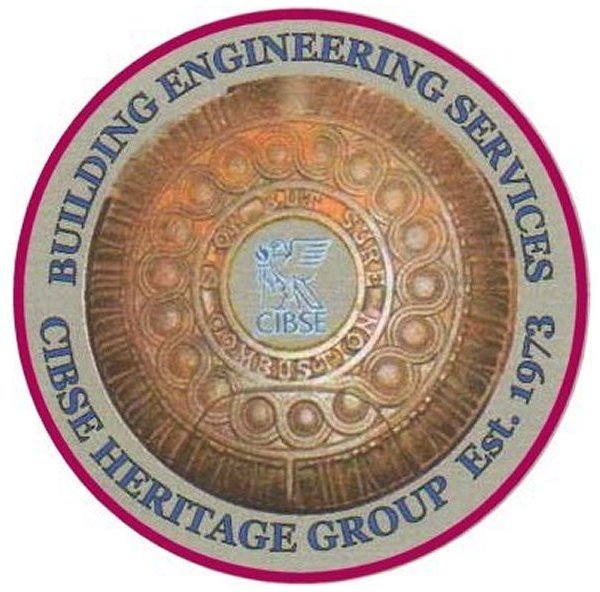
|
This story
begins with the birth of James Keith in 1801,
who by 1823 had opened his first shop in High
Street Arbroath trading as a plumber, gas fitter
and tinplate worker. With the business
successfully established, sadly James dies of a
heart attack at the young age of 42 in 1842.
George jr his son takes over managing the firm
and takes advantage of the increasing use of gas
for lighting and industrial use that becomes the
mainstay of the firm activities for the next
half century. The business continues to expand,
building new workshops and a brass foundry.
George jr in the 1850's although still in charge
of the business has started to take a keen
interest in the local council and politics.
His son James jr by 1870 was only 20 years old but took over running the firm and then opened its first branch office in Edinburgh. This venture quickly proved a success so James jr opened another branch in London. This branch in Holborn Viaduct in 1882 became the firm's head office and showrooms. He moved with his family to Hampstead, London in the same year. He had married Margaret Baxter in 1873 and they had three children Jane Douglas 1873, George iii 1876, Alexander 1880. The firm
prospers under the control of James jr who was a
prolific inventor with 300 Patents. One of his
Patents dated 1884 was the use of Mineral Oil
Gas Plants. These plants could be built at
Lighthouses powering the gas engines for
sounding their fog-horns. This proved most
successful and was accepted by the Commissioner
of Northern Lighthouses.
Soon after in 1888 the firm opened a new manufacturing works in Holloway London. The foundry in Arbroath was also increased in size to cope with the demand for its range of products such as gas fittings and heating boilers. 1890 finds George ii (James jr younger brother) now the works manager in charge of the Arbroath factory This year would also see James jr rewarded with the Gold, Silver and Bronze medals at the International Health Exhibition in London
|
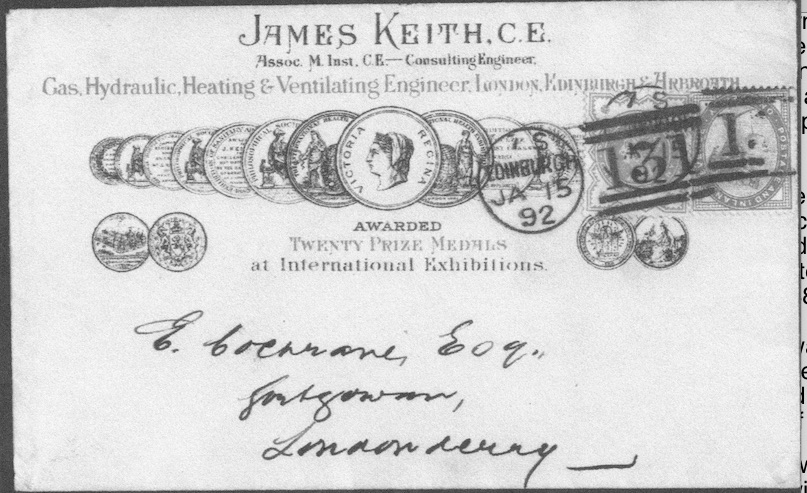 |
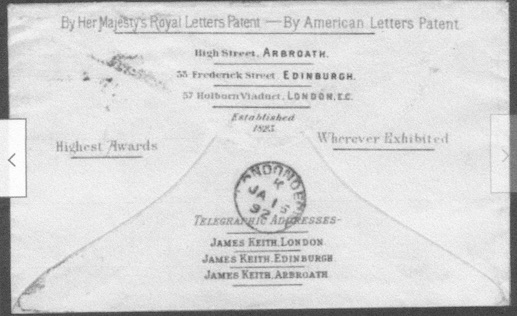 |
|
By 1890 his
engineering interests had grown into providing
the heating, ventilating and hydraulics for
municipal public bath houses and swimming pools.
He had patented many of his designs for boilers,
radiators and self-acting ram pumps.
1894 Keith was invited to prepare a report on the Ventilation system in the House of commons at the Palace of Westminster. His 18 page report can be read later in this webpage section. The Keith report provoked a response from the press which gave their opinions on the quality of the information. Their 34 page response can be read later in this webpage section. James Keith was also required to write a letter to Sir Isaac Holden (Liberal Member of Parliament 1865 - 1885) regarding his report on the Ventilation in the Houses of Parliament. The 13 page letter can be read later in this webpage section.
The new company's success continued and new offices were opened in Faringdon Avenue London. The first major public showing of the new companies products was a display at the International Exhibition Glasgow in 1901. |
|
In 1906 he
was called upon by Cunard Shipping Co, who were
currently building the liner RMS Aquatania. The
Company needed advice as they were experiencing
problems in maintaining an even temperature and
ventilation rate throughout their Liners. Keith’s
patented ventilation system was adopted for the
Liners and its success led to a long association
with the Cunard Co |
|
When he was 11 years old in
1860 he joined George Keith his father’s firm in
Arbroath and served a form of apprenticeship until
1865. On finishing his
apprenticeship James moved to Toronto in Canada to
join D S Keith his uncle’s engineering
firm where he spent several years working in Canada
and the United States gaining experience. In 1869 aged 20 he returned
to the UK and rejoined his fathers business in
Arbroath becoming a gas, hydraulic, heating &
ventilating engineer. He expanded the business
rapidly and by 1888 had opened branch offices in
Edinburgh and London. During this time period he
was applying for many Patents which eventually
totalled hundreds, dealing with sectional cast-iron
boilers, cold water ram pumps and mineral oil gas
works. During the 1880’s his firm
was responsible for the installation of heating
& ventilating in numerous prisons throughout the
UK. His expertise in the
mineral oil industry allowed him to install mineral
oil gas works at various lighthouses to supply their
fog-signal engines. His mineral oil gas works were
also installed in many country house estates in the
UK. In 1888 by his application
to the Institution of Civil Engineers he applied to
become a Chartered Engineer. He was made an
Associate Member in December 1888. He was seconded
by twelve eminent civil engineers of that period.
|
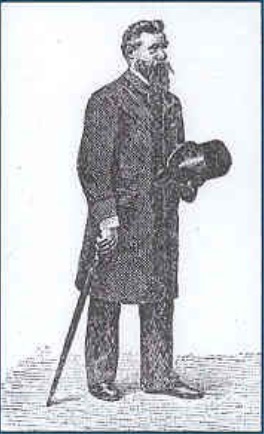 James Keith
Consulting Engineer
|
| Steam heating
installation
of H.M Prison Greenock 1885 Heating and Ventilating of H.M Prison Edinburgh (the Carlton) 1886 Special hot water boilers used by H.M Government for all their prisons throughtout the UK during the 1880's Heating and Ventilating of the new Athenaeum Buildings in Glasgow 1887 Heating Ventilating and hydraulic installations a Drumheigh Public Baths Edinburgh 1884 Heating Ventilating and hydraulic installations at Putney Public Baths London 1885 Heating Ventilating and hydraulic installations at Hampstead Public Baths London 1888 Heating Ventilating and hydraulic installations at Battersea Public Baths London 1888 Mineral Oil Gas plant for Lighthouse fog-horn signals at Langness Isle of Man 1879 Mineral Oil Gas plant for Lighthouse fog-horn signals at Alsa Craig Rock in Firth of Clyde 1885 Installation of self acting ram-pump to supply pure spring water to Old Paddockhurst Sussex over 300feet in height to a distance of 2 miles. 1885 Installation of self acting ram-pump to supply water to Farms and Village of Callaly Alnwick Northumberland to a height of 350 feet. 1888 |
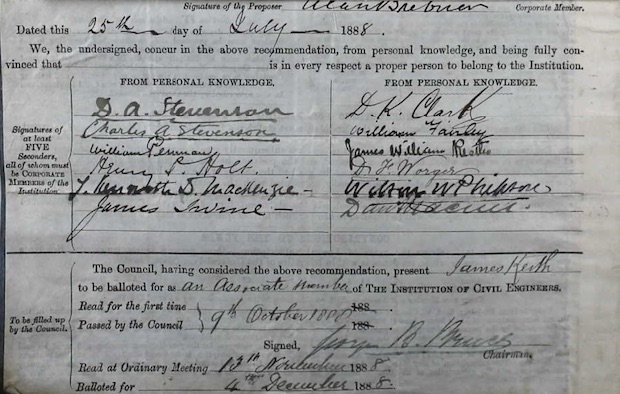 |
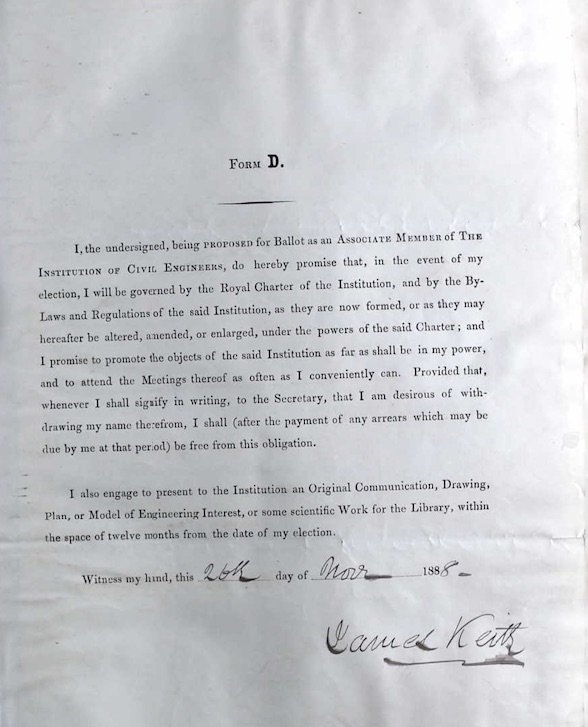 |
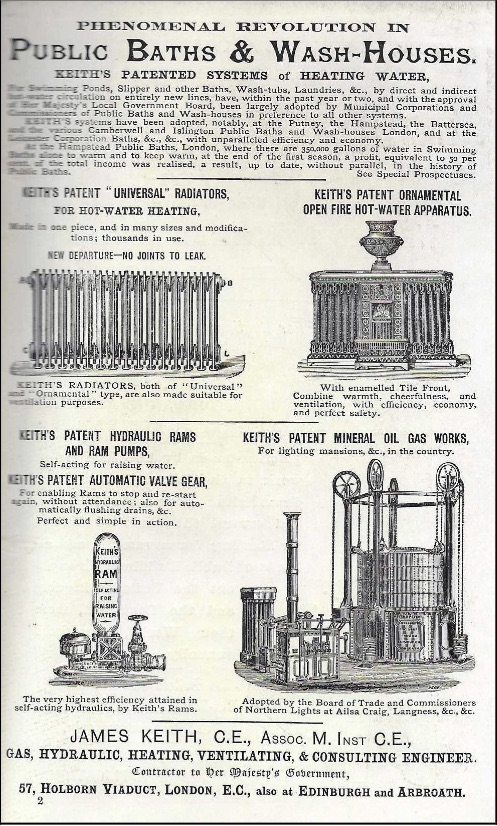 1891
|
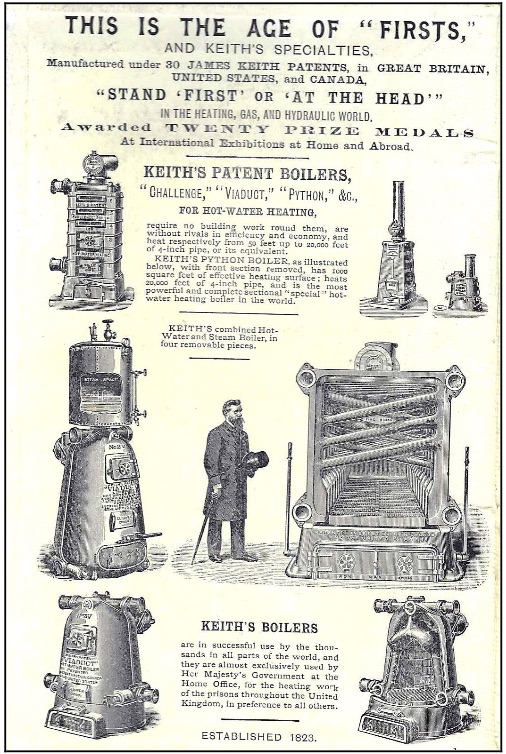 1891
|
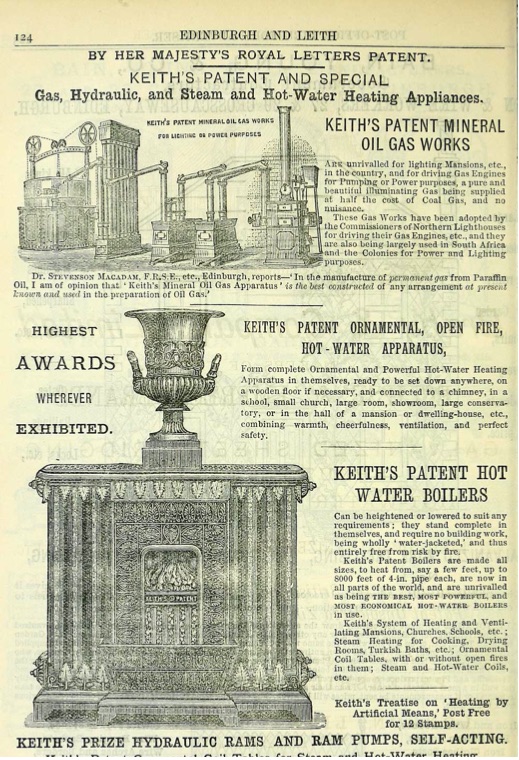  |
 |
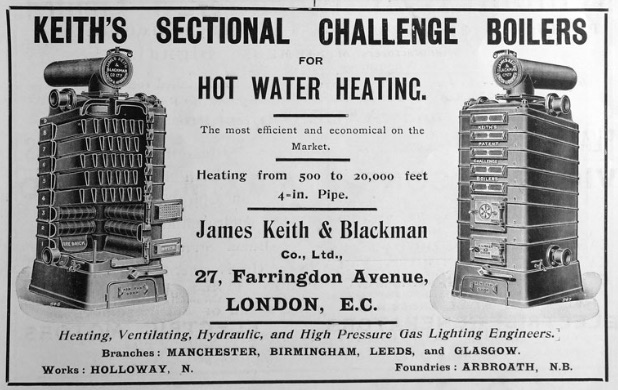 1906 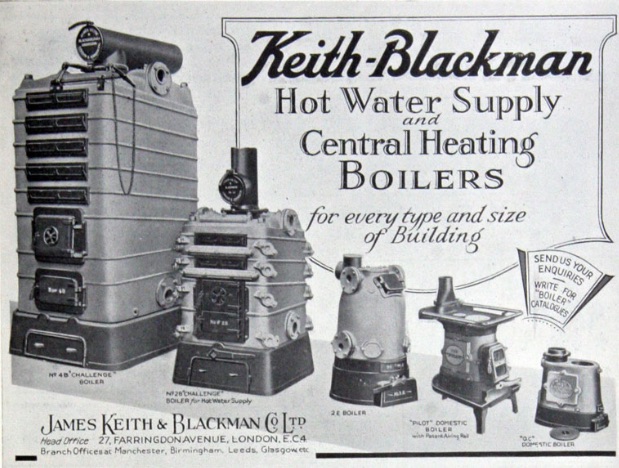 1928 |
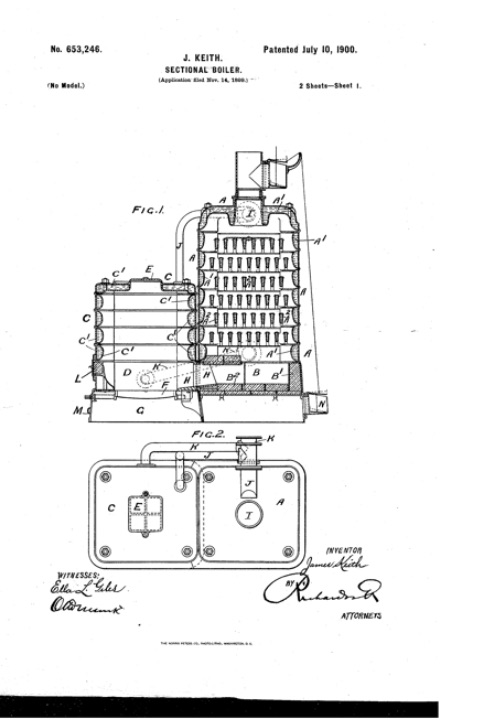 |
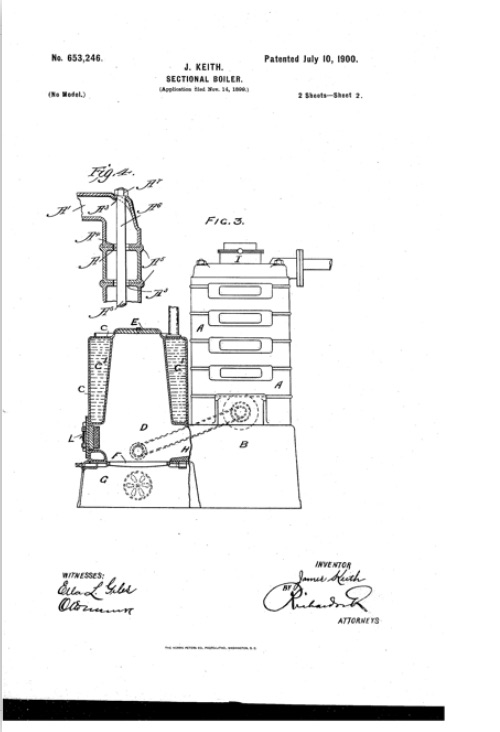 |
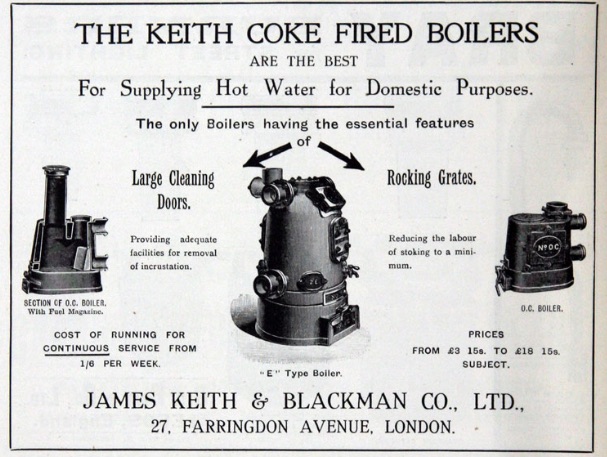
He rose to become a leading
authority on the gas industry both in the UK, Europe and
north America.
He became
responsible for the firm’s production of Keith gas lights
that were being installed to light important
London main roads such as Whitehall, Fleet Street, Charing
Cross, Piccadilly Circus, Pall Mall and London and
Blackfriars bridges over the Thames.
Georges interest in the use of gas also
related to its use in heating, residential lighting,
rotary compressors,
governors, pressure gauges, soldering irons and bunsen
burners.
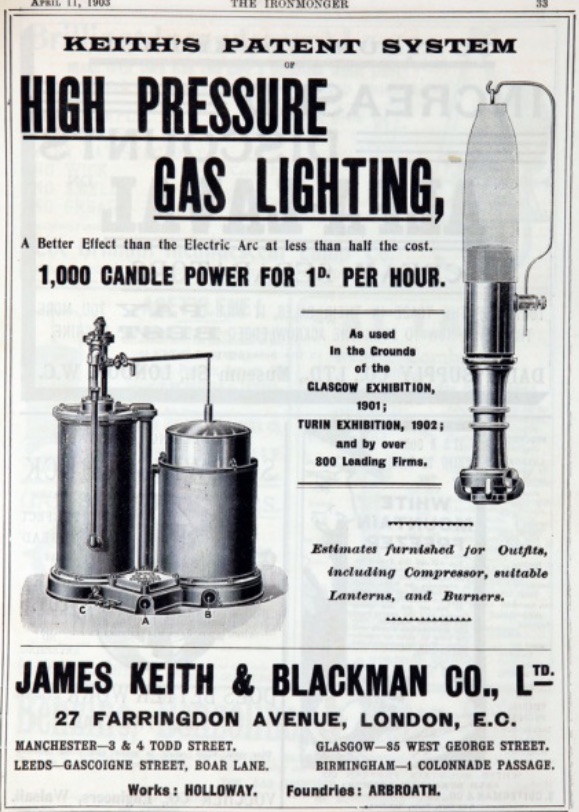 1903 |
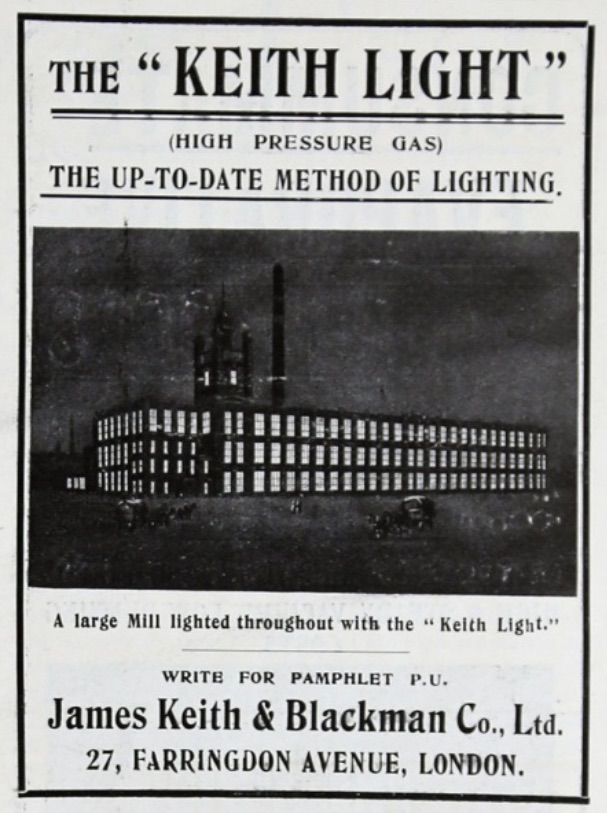 |
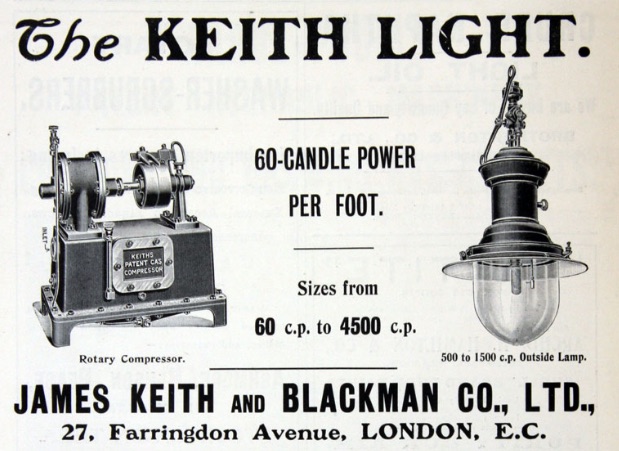 |
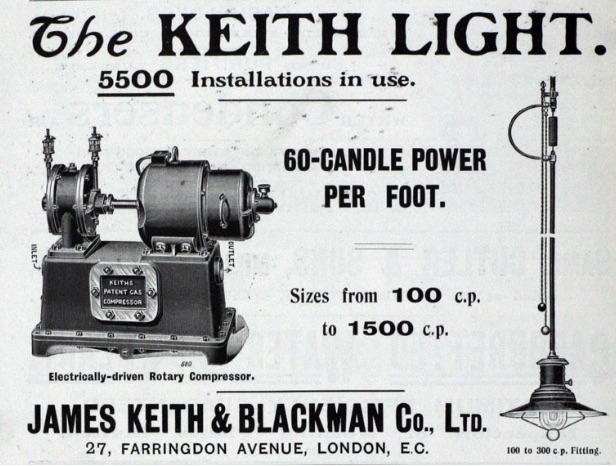 |
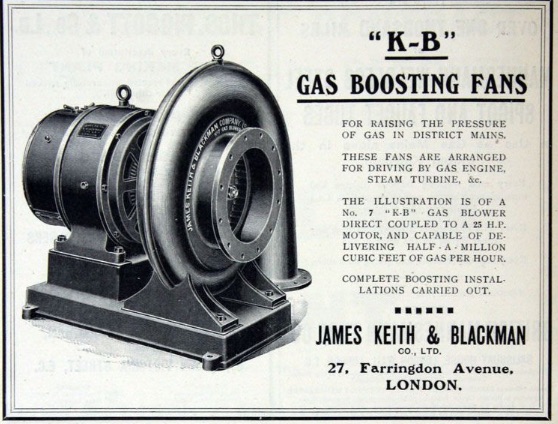 1913 |
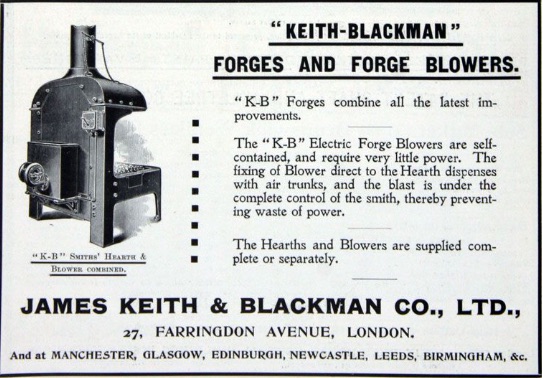 1913 |
| 1823 Shop
bought on the High Street Arbroath |
1952 High
Street foundry re-roofed at Arbroath |
| 1840
Adjacent premises bought to give greater frontage with
space for workshops and brass foundry |
1965 High
Street foundry closed in Arbroath |
| 1870 New
offices opened at 120 George Street Edinburgh |
1967 Keith
blackman Co Ltd taken over by Slater Walker |
| 1882 New
offices and showrooms opened at 57 Holborn Viaduct
London |
1968 Company
sold to the GEC |
| 1888 New
works built at Holloway London |
1968 Brass
Foundry closed |
| 1888 Factory
enlarged at Arbroath with machine shop, fitting shop and
blacksmiths |
1970 Stanley
Foundry closed |
| 1900 New
offices opened at 27 Faringdon Avenue London |
1978 High
street offices closed in Arbroath |
| 1911
Extensions at Applegate, Lordburn, Gravesend with brass
foundry. plate shop, fitting shop, machine shop and boiler shop |
1980
Tottenham Hale works closed and production moved to Rugby |
| 1927
Holloway works London expanded |
1982
Appleyard and Lordburn works closed |
| 1930 New
plating shop developed at Arbroath |
1984 Rugby
works closed and admin moved to Colchester |
| 1934 New
machine moulding shop at Arbroath |
1984
Arbroath offices closed |
| 1938 New HQ
factory and offices built at Tottenham Hale London. Now
becomes the manufacturing centre with the closure of the Holloway London works |
1985 Keith
Blackman Co Ltd ceases trading |
| 1945 Hight
Street foundry at Arbroath improved |
|
The
Arbroath foundry and works
closed in 1965. This ended the
130 year manufacturing
connection with the town.
Slater Walker Securities; This company performed what became known as a corporate raider of mainly public industrial companies. At its peak, capitalized at over £200 million. It had grown to be not only a bank but also an investment and insurance empire with stakes in industrial companies. Trading as a public industrial company around 1967, Keith Blackman Co was bought by Slater Walker Securities possibly as a hostile buyout. Slater Walker then changed strategy, from a corporate-conglomerate into what eventually was recognised as an unauthorised and unlicensed international investment bank, through the gradually disposal of its industrial interests. In September 1968 Jim Slater of Slater Walker sold Keith Blackman Co for a loss to the GEC Group who were then taken over by Siemans. From
a small firm started in Arbroath Scotland,
George Keith opened his business in 1823
offering a range of engineering services. As
his sons, grandsons and great grandson carried
on the business it grew to become one of the
largest Heating & Ventilating
manufacturing companies in Scotland with
offices in Edinburgh and works and offices in
London, carrying out installations throughout
the UK. James Keith merged in 1900 with
Blackman Ventilating Co to become Keith
Blackman Ventilating Co.
After serving the Building Engineering Services industry for over 100 years it was finally laid to rest. Sadly, Keith Blackman Co in 1984 closed their Rugby works and ceased trading. |